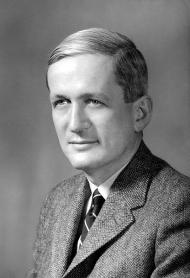The Women's Swimming Association sponsored Helen Wainwright and Trudy for an attempt at swimming the Channel. Helen Wainwright pulled out at the last minute because of an injury, but Trudy decided to go to France on her own. She trained with Jabez Wolffe, a swimmer who had attempted to swim the Channel 22 times. During the training, Wolffe continually tried to slow Trudy's pace, saying that she would never last at that speed. The training with Wolffe did not go well. In her first attempt at the Channel on August 18, 1925, Trudy was disqualified when Wolffe ordered another swimmer (who was keeping her company in the water), Ishak Helmy, to recover her from the water. According to Trudy and other witnesses, she was not "drowning" but resting, floating face-down. Trudy bitterly disagreed with Wolffe's decision.
Her successful Channel swim - this time training with Tom Burgess (who had successfully swum the Channel) - began approximately one year later at Cape Gris-Nez in France at 07:08 on the morning of August 6, 1926. She came ashore at Kingsdown, Kent, England 14 hours and 39 minutes later. Her record stood until Florence Chadwick swam the channel in 1950 in 13 hours and 20 minutes.
Gertrude possessed a contract from both the New York Daily News and Chicago Tribune when she attempted the Channel swim a second time. The money she received paid her expenses and provided her with a modest salary. It also gave her a bonus in exchange for exclusive rights to her personal story. The Daily News and the Chicago Tribune got the jump on every other newspaper in America.
Another American swimmer in France in 1926 to try and swim the Channel was Lillian Cannon from Baltimore. She was also sponsored by a newspaper, the Baltimore Post, which tried to create a rivalry between her and Ederle in the weeks spent training off the French coast. In addition to Cannon, several other swimmers, including two other American women - Clarabelle Barrett and Amelia Gade Corson - were training in England with the goal of becoming the first woman to swim the Channel. Barrett and Cannon were unsuccessful but three weeks after Ederle's feat, Corson crossed in a time that was 50 minutes slower than Ederle.
For her second attempt at the Channel, Ederle had an entourage aboard the tug (the Alsace) on August 6, 1926, which included her father and one of her sisters, Meg, as well as Julia Harpman, wife of Westbrook Pegler and a writer for the New York Daily News, the paper that sponsored Ederle's swim. Harpman wouldn't allow reporters from other newspapers on the tug - in order to protect her "scoop" - and as a result a second tug was hired by the disgruntled reporters. On several occasions during the swim this tug (the Morinie) came in close to Ederle and nearly endangered her chances. The incident caused subsequent bitterness. It also led to accusations in the British press that the two tugs had in fact sheltered Ederle from the bad weather and thus made her swim "easier".
During her twelfth hour at sea, Burgess, her trainer, had become so concerned by unfavorable winds that he called to her 'Gertie, you must come out!' The swimmer lifted her head from the choppy waters and replied, 'What for?'
Only five men had been able to swim the English Channel before Ederle. The best time had been 16 hours, 33 minutes by an Italian-born Argentine, Enrique Tiraboschi. Ederle walked up the beach at Kingsdown, England after 14 hours and 39 minutes. The first person to greet her was a British immigration officer who requested a passport from "the bleary-eyed, waterlogged teenager." (She was actually 20, not "a teenager," when she successfully swam the Channel.)
When Ederle returned home, she was greeted with a ticker-tape parade in New York City. More than two million people lined the streets of New York to cheer her. Subsequently she went on to play herself in a movie (Swim Girl, Swim) and tour the vaudeville circuit, including later Billy Rose's Aquacade. She met President Coolidge and had a song and a dance step named for her. Her manager, Dudley Field Malone, was not able to capitalize on her notoriety, so Ederle's career in vaudeville was a huge financial success. The Great Depression also diminished her financial rewards. A fall down the steps of her apartment building in 1933 twisted her spine and left her bedridden for several years, but in 1939 she recovered well enough to appear at the New York World's Fair.
(photo source www.history.com)

